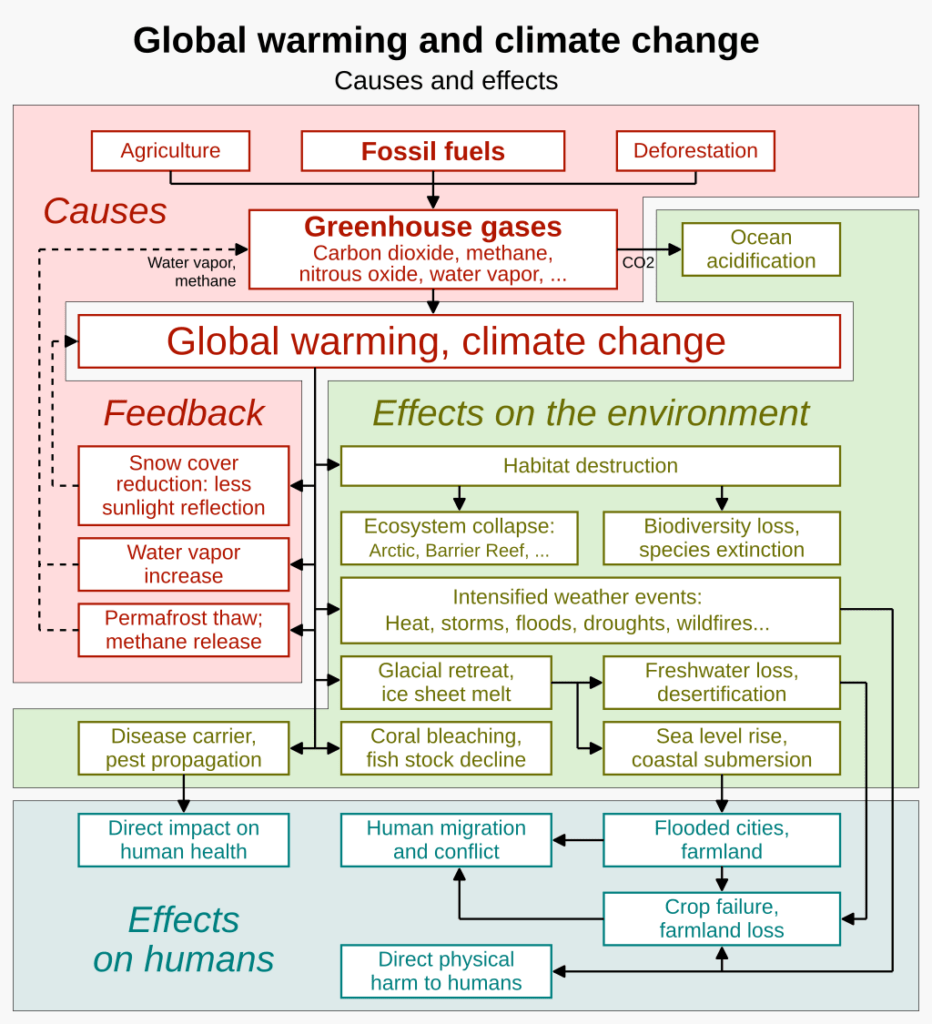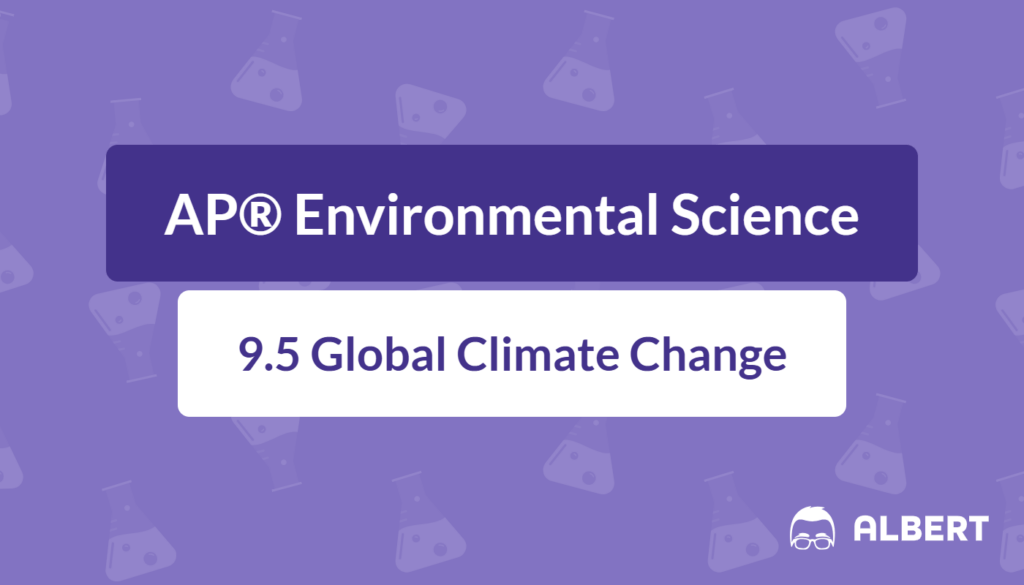What We Review
Introduction
Global climate change refers to long-term shifts in temperature patterns and average weather conditions. These gradual yet powerful changes influence ecosystems, weather events, and the overall stability of our planet’s life-supporting systems. Climate change is not a recent phenomenon; rather, Earth has experienced warmer and cooler periods throughout geologic history. However, current warming trends are happening more quickly due to human activities such as fossil fuel combustion and deforestation. So, what is the difference between climate change and global warming? Global warming refers specifically to the rise in Earth’s average temperature. On the other hand, climate change encompasses a broader range of changes in weather patterns and ecosystems.
Learning about climate change is crucial because it brings together key concepts from ecology, geology, and atmospheric science. By examining historical data, analyzing feedback loops, and studying impacts on ecosystems, students can gain a deeper understanding of why effective solutions matter. Therefore, this guide offers a step-by-step look at how climate change occurs, how it presents itself, and how it affects the natural world and human populations.
What Is Climate Change?
Climate change describes significant alterations in temperature and other weather conditions over extended periods. It involves shifts in precipitation patterns, storm frequency, and average atmospheric temperatures. Meanwhile, global warming is a term that focuses primarily on the upward temperature trend across the entire Earth. Thus, climate change covers a broader scope, including global warming as well as oceanic current shifts, atmospheric circulation changes, and variations in soil viability.
Example
Imagine that one year’s temperature is higher than average. That isolated event alone does not define climate change. However, multiple consecutive decades of higher-than-normal temperatures, combined with altered rainfall and increasing storm intensity, signifies a climate shift rather than a passing weather anomaly.
Historical Context of Climate Change
Earth’s climate has fluctuated greatly throughout its long history. Major examples include Ice Ages—periods marked by extensive ice sheets covering much of the planet—and interglacial phases, when temperatures rose and ice melted. Ancient evidence comes from ice cores drilled in glacial regions; scientists examine trapped gas bubbles to estimate carbon dioxide (CO₂) concentrations.
These data show that CO₂ levels have repeatedly surged and plummeted, often accompanied by parallel temperature shifts. Indeed, CO_2 measurements reveal cyclical patterns that help clarify why climate oscillations occur. Because of this evidence, environmental scientists can better predict how ongoing human-induced carbon emissions might influence future temperature trends.
Example
During glacial periods, vast ice sheets spread across continents. Then, when temperatures rose, the ice retreated, opening new habitats. Patterns tracked using ice cores indicate that elevated CO_2 typically aligns with periods of global warmth, confirming a long‑established link between greenhouse gases and temperature changes.
Effects of Climate Change
Climate change affects the planet in several ways. Short-term variations sometimes go unnoticed, but over decades, clear patterns emerge.

Rising Temperatures
Warmer global temperatures can intensify heatwaves, alter rainfall patterns, and disturb agricultural cycles. Therefore, certain regions might experience frequent drought conditions, while others face stronger rainstorms and flooding.
Step-by-Step Example of Temperature Impacts:
- Regional average temperatures rise by a few degrees.
- Local ecosystems respond by shifting species distributions.
- Heat stress affects plant growth, influencing agricultural productivity.
- Extended dry spells can lead to wildfires and desertification.
Melting Ice and Sea Levels
Melting permafrost and shrinking ice sheets cause sea levels to rise. As sea ice recedes, coastlines become increasingly vulnerable to storms. Additionally, the melting of glaciers and thawing tundra can release stored greenhouse gases like methane, amplifying the warming cycle.
Step-by-Step Example of Sea Level Rise:
- Polar ice sheets lose mass due to higher temperatures.
- Meltwater enters oceans, causing a gradual sea-level increase.
- Coastal infrastructure faces flood risks.
- Coastal populations may relocate, leading to social and economic challenges.
Impact on Ecosystems
Warmer oceans and changed temperature profiles produce marine habitats in places that used to be dry land, while some deeper communities lose access to sunlight. In newly flooded continental shelves, species may flourish in new shallow-water environments. However, deeper communities that once thrived in the photic zone might receive reduced sunlight if water levels increase.
Step-by-Step Example of Ecosystem Impact:
- Rising sea level expands coastal shallows, creating new habitats.
- Marine species adapted to shallow, sunlit waters move into these areas.
- Other organisms living deeper in the water column lose optimal photic conditions.
- Shifts in biodiversity occur, influencing overall ecological balance.
Atmospheric Circulation and Climate Change
Atmospheric circulation involves the global movement of air masses that helps distribute heat and moisture. Climate change has the potential to alter these wind patterns, including the jet stream and Hadley cells. Consequently, changes in temperature gradients can shift storm tracks, resulting in more frequent or more intense weather events in certain regions.
Example
Consider the jet stream as a powerful “river” of fast-moving air. A warming Arctic region reduces the temperature difference between polar and mid-latitude air masses, allowing the jet stream to wander more than usual. In turn, this can bring prolonged cold or hot spells to regions unaccustomed to such extremes.
Oceanic Currents and Global Climate
Oceanic currents, often referred to as the ocean conveyor belt, transport heat from tropical to polar regions. When currents weaken or shift, regional climates can change dramatically. Therefore, coastal areas dependent on currents for moderate weather patterns might see unusual temperature fluctuations or altered ecosystems.
Example
If a major Atlantic current slows down, coastal Europe could become relatively cooler despite overall global warming. Changes in salinity, ice melt, and ocean temperature can disrupt heat circulation, underscoring the delicate balance linking land, oceans, and atmosphere.
Feedback Loops in Climate Change
Feedback loops refer to processes that either amplify (positive feedback) or stabilize (negative feedback) an initial change. In the Arctic, melting sea ice provides an illustrative positive feedback loop. Ice and snow reflect a high percentage of sunlight back into space. As they melt, darker ocean surfaces absorb more heat instead of reflecting it.
Step-by-Step Example of Positive Feedback in Polar Regions:
- Rising temperatures begin melting ice.
- Darker surfaces absorb more solar energy.
- Local warming accelerates.
- Additional ice melts, continuing the loop.
Such cycles can speed up warming, which is why polar regions respond quickly to climate change and can release additional greenhouse gases, such as methane from thawing tundra.
Soil and Climate Change
Changing rainfall, combined with rising temperatures, affects soil moisture and fertility. Drying weather can transform productive farmland into arid land, while intense rains increase erosion. Consequently, farmers and land managers must adapt techniques to preserve topsoil and maintain crop yields.
Example
In some semi-arid regions, higher temperatures and reduced rainfall intensify drought conditions. As fields become less fertile, agricultural productivity declines. Conservation practices, including cover cropping and minimized tillage, help trap moisture and reduce soil erosion rates. By analyzing soil data, experts can develop sustainable methods that preserve the long-term viability of farmland.
Consequences for Wildlife and Human Populations
Rapidly changing habitats challenge species that depend on stable environments. Polar bears, for instance, rely on sea ice for hunting. Because of warmer climates and melting conditions, these animals may struggle to find enough food. Additionally, coastal populations face displacement from rising sea levels. Therefore, governments, communities, and international bodies collaborate on mitigation and adaptation strategies, such as relocating neighborhoods or restoring ecosystems that can buffer climate impacts.
Example
Studies of Arctic habitats reveal that sea-ice decline gradually forces polar bears inland, where food is scarce. If this pattern persists, the species faces increased hardship and population decline. Similarly, island nations construct seawalls or plan large-scale evacuations to cope with persistent flooding, illustrating human adaptation needs. By comparing different strategies, environmental scientists gain insights into practical solutions for at-risk ecosystems and communities.
Conclusion
Global climate change spans rising temperatures, melting ice, shifting atmospheric circulation, and altered oceanic currents. These interlinked processes affect every ecosystem on Earth, from coastal habitats to polar tundra. Historical evidence confirms that Earth’s climate has always changed, but modern warming is occurring at an unprecedented pace and scale. Understanding these dynamics is vital for constructing effective solutions, whether through renewable energy projects, improved soil management, or global policy initiatives.
Exploring these concepts helps illustrate why addressing climate change is fundamental for human and environmental sustainability. By examining historical trends and real-world examples, students can view climate change as a system of interconnected feedback loops and regional impacts. Appreciating these connections leads to informed action, from local conservation efforts to international cooperation on emission reductions.
Key Vocabulary
- Climate Change: Long-term alteration of temperature and typical weather patterns across Earth.
- Global Warming: The ongoing rise in average global temperatures largely attributed to human activities.
- Positive Feedback Loop: A process that amplifies change; in climate, warming causes effects that further increase warming.
- Atmospheric Circulation: The large-scale movement of air that distributes heat and moisture around the globe.
- Oceanic Currents: Continuous flow patterns within the ocean that transfer heat and greatly influence regional climates.
Sharpen Your Skills for AP® Environmental Science
Are you preparing for the AP® Environmental Science test? We’ve got you covered! Try our review articles designed to help you confidently tackle real-world AP® Environmental Science problems. You’ll find everything you need to succeed, from quick tips to detailed strategies. Start exploring now!
- AP® Environmental Science: 9.2 Review
- AP® Environmental Science: 9.3 Review
- AP® Environmental Science: 9.4 Review
Need help preparing for your AP® Environmental Science exam?
Albert has hundreds of AP® Environmental Science practice questions, free response, and full-length practice tests to try out.








